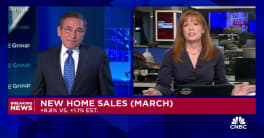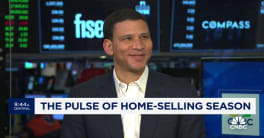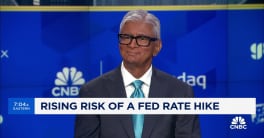The Mortgage Bankers Association (MBA) quarterly delinquency report is jammed full of information reported from dozens of different perspectives - all loans, prime, subprime, government guaranteed and not, national, regional, and by state, and by several different categories of delinquency. The information is important (witness the stock market reaction on Tuesday) and interesting but can be tough to read and understand.
First, the report cuts data into several categories of "delinquent."
Various state mandated procedures and corporate policies make the lines a little
blurry but MBA has done probably the best job possible to include these differences
in relatively broad categories although they do not do a particularly good job
in explaining them.
So some definitions, at least as best as we can decipher them.
Delinquent: The non-seasonally adjusted percentage of loans for which payments are behind 30, 60, or 90+ days.
Seriously delinquent and loans entering foreclosure: Loans that are 90 days or more delinquent or have, within the quarter, become the subject of foreclosure action. Because companies have different policies on timing and on forbearance both of these categories are needed for a complete picture, i.e. some companies start formal legal procedures at 90 days; some may wait much longer, particularly where they are actively working with a debtor.
Foreclosure inventory: Those loans that are in foreclosure but have not completed the judicial process which is more time consuming in some states than in others.
The National Delinquency Survey encompasses 43.5 million first-lien mortgages on one-to-four family houses, a number that increased by 880,000 loans between the third and fourth quarters of 2006 and 2.2 million loans from one year earlier. The subprime portion of this database includes 6 million in loans, 200,000 more than the previous quarter and 440,000 more than one year earlier. The survey covers 80 percent of outstanding loans in the U.S. and more than 50 percent of outstanding subprime loans.
To repeat the brief summary of survey findings we gave a day or so ago: the overall delinquency rate for one-to-four-unit properties, seasonally adjusted, was up 28 basis points from the third quarter to 4.95 percent; 25 points higher than the fourth quarter of 2005. 13.33 percent of all subprime loans are now delinquent, an increase of 77 basis points since the third quarter and 13.46 percent of FHA loans were also not performing, an increase of 66 basis points. Delinquent prime loans increased from 2.44 percent to 2.57 percent and VA loans went from a delinquency rate of 6.58 percent to 6.82 percent.
Looked at in a historical overall delinquency should not be particularly alarming. In the last five years the rate for all loans has moved in a narrow range from a low of 4.31 percent during the first quarter of 2005 to a high of 5.27 percent in mid-2002. While prime delinquencies are in the upper range, there has been 5 quarters since the beginning of 2002 when the rate has been higher. However, sub-prime delinquencies were at the highest level since the third quarter of 2002, and FHA loans reached a new record.
But there has been a recent escalation that alarms observers, especially given the number of ARMs that will experience rate adjustments over the next few years. All adjustable rate (ARM) as well as fixed rate (FRM) loans had higher seasonally adjusted delinquency rates compared to the third quarter of 2006. Delinquency rates in the fourth quarter increased 33 basis points for prime ARM loans (from 3.06 percent to 3.39 percent) and increased 122 basis points for subprime ARMs (from 13.22 percent to 14.44 percent). The SA delinquency rate for prime fixed loans increased 17 basis points (from 2.10 to 2.27 percent); while the rate increased 50 basis points for subprime fixed loans (from 9.59 percent to 10.09 percent).
The foreclosure inventory rate increased for prime loans and subprime loans and decreased for FHA loans and VA loans from the third to the fourth quarter. The foreclosure inventory rate increased six basis points for prime loans (from 0.44 percent to 0.5 percent) and 67 basis points for subprime loans (from 3.86 percent to 4.53 percent). The foreclosure inventory rate decreased nine basis points for FHA loans (from 2.28 percent to 2.19 percent) and eleven basis points for VA loans (from 1.12 percent to 1.01 percent).
By loan type, the foreclosure start rate was up five basis points for prime loans (from 0.19 percent to 0.24 percent), 18 basis points for subprime loans (from 1.82 percent to 2 percent), 14 basis points for FHA loans (from 0.79 percent to 0.93 percent), and two basis points for VA loans (from 0.32 percent to 0.34 percent).
In the fourth quarter of 2006, the percent of loans that were seriously delinquent, which is defined as the non-seasonally adjusted percentage of loans that are 90 days or more delinquent or in the process of foreclosure, was 2.21 percent, 21 basis points higher than for the third quarter of 2006. This measure is designed to account for inter-company differences on when a loan enters the foreclosure process.
Since the fourth quarter of 2005, the delinquency rate increased for all loan types; 10 basis points for prime loans, 170 basis points for subprime loans, 28 basis points for FHA loans, and one basis point for VA loans.
Compared with the fourth quarter of 2005, the foreclosure inventory rate increased eight basis points for prime loans and 120 basis points for subprime loans. The rate decreased 15 basis points for FHA loans and 12 basis points for VA loans.
Over the last year, the seasonally adjusted rate of new foreclosures increased 12 basis points overall, six basis points for prime loans, 53 basis points for subprime loans, 2 basis points for FHA loans and was unchanged for VA loans.
Nationwide 49 of the 51 states had increases in overall delinquencies and 44 saw an increase in the foreclosure inventory. Mississippi, Louisiana, and Michigan had the highest overall percentage of delinquent loans at 10.64, 9.10 and 7.87 percent respectively. The states with the highest foreclosure inventory rates across all loan types were Ohio (3.38), Indiana (2.97), and Michigan (2.39 percent).
The largest increases in overall delinquency rates from the third to the fourth quarter were racked up by West Virginia (1.00), Maine (0.76), and Florida (0.69 percentage points). The greatest increases in foreclosure inventories were in Nevada, Mississippi, and Massachusetts which each recorded an increase of about one-quarter percent.
MBA called for caution on the part of policymakers before rushing into regulatory or legislative actions that would prevent the market from responding efficiently to changes in underlying economic conditions. Doug Duncan, MBA's Chief Economist and Senior Vice President of Research and Business Development noted that market discipline in his industry was swift, could be severe, and is more effective at changing lending practices than potential changes in regulation.
"The market is working, culling over-capacity from the industry, as price signals from the capital markets lead to changes in product mix from originators, and directly and immediately impact the rates that mortgage lenders can offer to borrowers. Far from being a problem, these clear and effective market signals and actions will help the market to more efficiently regain its equilibrium."
He urged consumers to contact their lenders early on if financial difficulties loom in order to allow the lender the flexibility to address individual circumstances. "It is in everyone's interest to keep the homeowner in their home paying their bills on time."
"Given our macroeconomic forecast of below trend economic growth and a slowly recovering housing market, we would expect delinquency and foreclosure rates to level off as the housing market regains its footing towards the end of 2007," he said.







